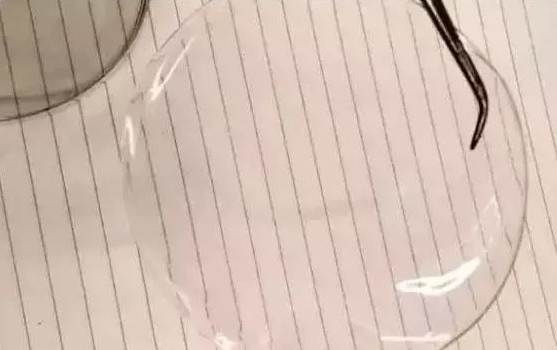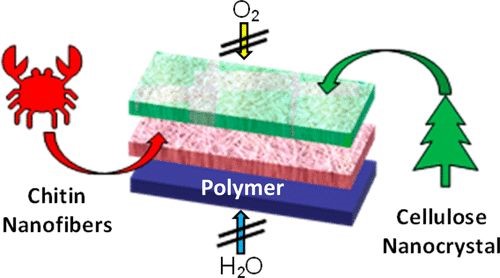Cellulose and chitin, the two most common biopolymers in the world, are found in plant and crustacean shells (amongst other places), respectively. Scientists at the Georgia Institute of Technology have now devised a way to combine the two to produce compostable food packaging similar to plastic bags.
Led by Prof. J. Carson Meredith, the research team is working by suspending cellulose nanocrystals extracted from wood and chitin nanofibers extracted from crab shells in water, and then spraying the solution onto a bioavailable in alternating layers. This material is produced on a reused polymer substrate – a good combination of negatively charged cellulose nanocrystals and positively charged chitin nanofibers.
Once dried and peeled from the substrate, the resulting transparent film has high flexibility, strength and compostability. What’s more, it can also outperform traditional non-compostable plastic wrap at keeping food from spoiling. “Our primary benchmark against which this material is compared is PET or polyethylene terephthalate, which is one of the most common petroleum-based materials you see in clear packaging in vending machines and the like,” Meredith said. “Our material shows a 67 percent reduction in oxygen permeability compared to some forms of PET, meaning it could theoretically keep food longer.”
The decrease in permeability is due to the presence of nanocrystals. “It is difficult for a gas molecule to penetrate a solid crystal because it has to disrupt the crystal structure,” Meredith said. “On the other hand, things like PET have a lot of amorphous or non-crystalline content, so there are more pathways for small gas molecules to find more easily.”
Ultimately, biopolymer-based films could not only replace plastic films that currently don’t biodegrade when discarded, but also make use of wood waste generated in factories and crab shells discarded by the seafood industry. Until then, however, the cost of producing the material on an industrial scale must be reduced.
Post time: Aug-29-2022


